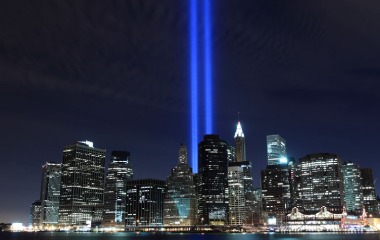The disturbing images of the terrorist attacks on the World Trade Center in New York, N.Y., were like a waking nightmare. But did the tragic events of Sept. 11, 2001, affect how we dream? And can we learn anything about the role of dreaming from our response to these events?
Researchers from Tufts University School of Medicine and Newton-Wellesley Hospital in Boston, Mass., sought to answer these questions. The study by Dr. Ernest Hartmann and Tyler Brezler was published in the journal Sleep in 2008.
Hartmann and Brezler recruited 11 men and 33 women for their study. Each member of the study group had been recording all their dreams for years. The age range of the 44 participants was 22 to 70 years. They lived across the U.S. None of them lived in Manhattan, and none had anyone close to them die in the attacks.
Each participant submitted written accounts of 20 dreams for the study. These were the last 10 dreams they recorded before 9/11 and the first 10 dreams recorded after the attacks. Most participants recorded at least one or two dreams per week.
The 880 dreams were assigned random numbers. Then they were scored on a blind basis. Dreams were analyzed for features such as central image, intensity, emotion and vividness. They also were scored for content involving attacks, tall buildings and airplanes.
The study authors define a “central image” as a striking or compelling image that stands out. It may be powerful, vivid, bizarre or detailed.
Dreams and 9/11
Results show a significant increase in the presence and intensity of a central image in dreams after 9/11. The researchers conclude that this change springs from an increased emotional arousal after 9/11.
“The more intense imagery is very consistent with findings in people who have experienced trauma of various kinds,” said Dr. Hartmann. “The idea is that we all experienced at least some trauma on 9/11/01.”
Surprisingly, there was no increase in dream content involving airplanes or tall towers. There also were no “replay dreams.” None of the 440 post-9/11 dreams portrayed the events that were replayed time and again on television.
But there was a trend in these dreams to more content involving attacks. The dreamer was almost always the victim or potential victim. Attacks involved animals or monsters, violent criminals or battle scenes.
According to the American Academy of Sleep Medicine, bad dreams can cause emotional distress. A nightmare disorder may develop if you have repeated nightmares. About 2% to 8% of people have a nightmare problem. Nightmares also are a common sign of post-traumatic stress disorder (PTSD).
Dream Theories and 9/11
In the study results the authors find support for the Contemporary Theory of Dreaming. The theory states that dreams are guided by the emotion of the dreamer. The central imagery of the dream depicts the dreamer’s emotion.
This would explain why no dreams in the study depicted specific scenes of the terrorist attacks. Instead the dreams were more likely to involve the emotional theme or idea of an attack. This supports the view that dreams are new, emotional creations rather than a replay of waking events.
As an example the authors cite the common dream image of a tidal wave. It is often reported by people who have been through an attack or other trauma. The image of a tidal wave may reflect the emotion of terror or being overwhelmed.
The authors predict that the images of 9/11 may become another “tidal wave.” We may dream of the terrorist attacks during stressful times of emotional trauma.
The authors also state that the study results give some support to the “continuity hypothesis” of dreaming. This view is that dreams reflect the concerns of waking life.
Dreams in the study did not reflect the likely concerns about future terrorist attacks. But they did reflect a general, emotional concern about a lack of safety.
Article originally published on Sept. 11, 2008





